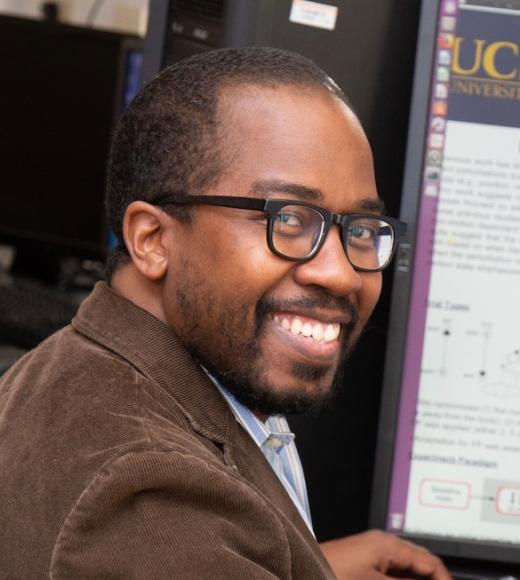
Position Title
Professor
Position Title
Professor
- Neurobiology, Physiology and Behavior; Neurology
Bio
Research Interests
Sensorimotor integration in visual perception, motor learning and rehabilitation
Our laboratory studies how we use different sources of information to aid behavior, ranging from visual perception to movement planning and updating. Specifically, we are interested in how external and internally-generated sensory information is integrated in healthy individuals, in comparison to certain disease and impaired populations (e.g., Schizophrenia and upper extremity amputees). Achieving this understanding may lead to better methods for diagnosing and treating impairments of the nervous system.
Grad Group Affiliations
- Neuroscience
- Biomedical Engineering
Specialties / Focus
- Computational Bioengineering
- Musculoskeletal Biomechanics
Courses
- NPB 110B: Neurobiology Foundations
Honors and Awards
- NSF CAREER Award
- NIH Pathway to Independence Award (K99/R00)
Professional Societies
- Society for Neuroscience
- Neural Control of Movement
Degrees
- PhD Biomedical Engineering, Johns Hopkins School of Medicine, 2007
- BS Biomedical Engineering, Saint Louis University, 2001
Selected Publications
- Joiner WM, Cavanaugh J, Wurtz RH, Cumming BG. Visual responses in FEF, unlike V1, primarily reflect when the visual context renders a receptive field salient. Journal of Neuroscience 37: 9871-9879, 2017.
- Zhou W, Fitzgerald J, Colucci-Chang K, Murphy K, Joiner WM. The temporal stability of visuomotor adaptation generalization. Journal of Neurophysiology 118: 2435-2447, 2017.
- Joiner WM, Sing GC, Smith MA. Temporal specificity of the initial adaptive response in motor adaptation. PLoS Computational Biology 13: e1005438, 2017.
- Hosseini EA, Nguyen KP, Joiner WM. The decay of motor adaptation to novel movement dynamics reveals an asymmetry in the stability of motion state-dependent learning. PLoS Computational Biology 13: e1005492, 2017.
- Cavanaugh J, Berman RA, Joiner WM, Wurtz RH. Saccadic corollary discharge underlies stable visual perception. Journal of Neuroscience 36: 31-42, 2016.
- Bansal S, Jayet Bray LC, Peterson MS, Joiner WM. The effect of saccade metrics on the corollary discharge contribution to perceived eye location. Journal of Neurophysiology 113: 3312-3322, 2015.
- Joiner WM, Cavanaugh J, Wurtz RH. Compression and suppression of shifting receptive field activity in frontal eye field neurons. Journal of Neuroscience 33: 18259-18269, 2013.
- Joiner WM, Cavanaugh J, FitzGibbon EJ, Wurtz RH. Corollary discharge contributes to perceived eye location in monkeys. Journal of Neurophysiology 110: 2402-2413, 2013.
- Joiner WM, Brayanov JB, Smith MA. The training schedule affects the stability, not the magnitude, of the interlimb transfer of learned dynamics. Journal of Neurophysiology 110: 984-998, 2013.
- Joiner WM, Cavanaugh J, Wurtz RH. Modulation of shifting receptive field activity in frontal eye field by visual salience. Journal of Neurophysiology 106: 1179-1190, 2011.
- Joiner WM, Ajayi O, Sing GC, Smith MA. Linear hypergeneralization of learned dynamics across movement speeds reveals anisotropic, gain-encoding primitives for motor adaptation. Journal of Neurophysiology 105: 45-59, 2011.
- Sing GC, Joiner WM, Nanayakkara T, Brayanov JB, Smith MA. Primitives for motor adaptation reflect correlated neural tuning to position and velocity. Neuron 64: 575-589, 2009.
